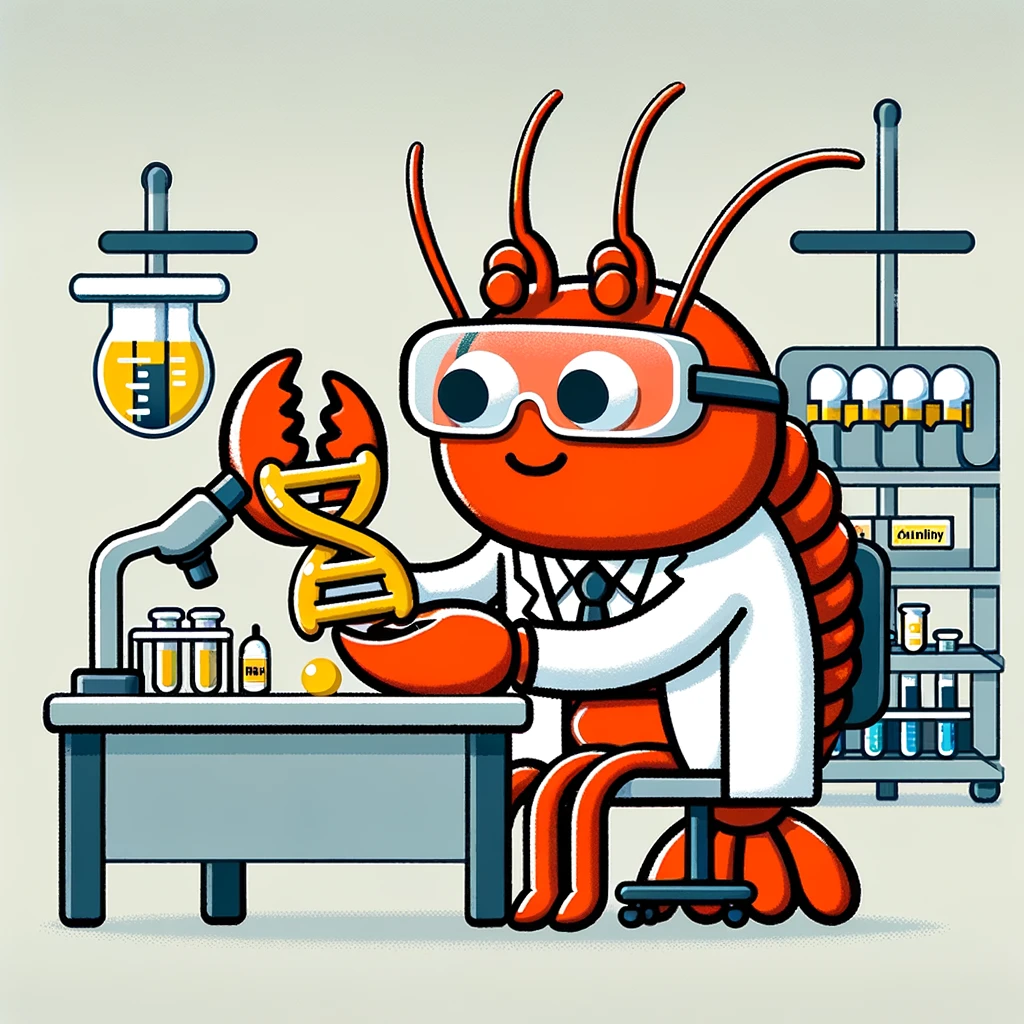Language models for Biological Sequence Transformation and Evolutionary Representation
lobster is a "batteries included" language model library for proteins and other biological sequences. Led by Nathan Frey, Taylor Joren, Aya Abdlesalam Ismail, Joseph Kleinhenz and Allen Goodman, with many valuable contributions from Contributors across Prescient Design, Genentech.
This repository contains training code and access to pre-trained language models for biological sequence data.
Table of contents
- LBSTER is built for pre-training models quickly from scratch. It is "batteries included." This is most useful if you need to control the pre-training data mixture and embedding space, or want to experiment with novel pre-training objectives and fine-tuning strategies.
- LBSTER is a living, open-source library that will be periodically updated with new code and pre-trained models from the Frey Lab at Prescient Design, Genentech. The Frey Lab works on real therapeutic molecule design problems and LBSTER models and capabilities reflect the demands of real-world drug discovery campaigns.
- LBSTER is built with beignet, a standard library for biological research, and integrated with cortex, a modular framework for multitask modeling, guided generation, and multi-modal models.
- LBSTER supports concepts; we have a concept-bottleneck protein language model we refer to as CB-LBSTER, which supports 718 concepts.
If you use the code and/or models, please cite the relevant papers.
For the lbster code base cite: Cramming Protein Language Model Training in 24 GPU Hours
@article{Frey2024.05.14.594108,
author = {Frey, Nathan C. and Joren, Taylor and Ismail, Aya Abdelsalam and Goodman, Allen and Bonneau, Richard and Cho, Kyunghyun and Gligorijevi{\'c}, Vladimir},
title = {Cramming Protein Language Model Training in 24 GPU Hours},
elocation-id = {2024.05.14.594108},
year = {2024},
doi = {10.1101/2024.05.14.594108},
publisher = {Cold Spring Harbor Laboratory},
URL = {https://www.biorxiv.org/content/early/2024/05/15/2024.05.14.594108},
eprint = {https://www.biorxiv.org/content/early/2024/05/15/2024.05.14.594108.full.pdf},
journal = {bioRxiv}
}
For the cb-lbster code base cite: Concept Bottleneck Language Models for Protein Design
@article{ismail2024conceptbottlenecklanguagemodels,
title={Concept Bottleneck Language Models For protein design},
author={Aya Abdelsalam Ismail and Tuomas Oikarinen and Amy Wang and Julius Adebayo and Samuel Stanton and Taylor Joren and Joseph Kleinhenz and Allen Goodman and Héctor Corrada Bravo and Kyunghyun Cho and Nathan C. Frey},
year={2024},
eprint={2411.06090},
archivePrefix={arXiv},
primaryClass={cs.LG},
url={https://arxiv.org/abs/2411.06090},
}
clone the repo, cd into it and do mamba env create -f env.yml
then from the root of the repo, do
pip install -e .| Shorthand | #params | Dataset | Description | Model checkpoint |
|---|---|---|---|---|
| Lobster_24M | 24 M | uniref50 | 24M parameter protein Masked LLM trained on uniref50 | lobster_24M |
| Lobster_150M | 150 M | uniref50 | 150M parameter protein Masked LLM trained on uniref50 | lobster_150M |
| Shorthand | #params | Dataset | Description | Model checkpoint |
|---|---|---|---|---|
| cb_Lobster_24M | 24 M | uniref50+SwissProt | 24M parameter a protein concept bottleneck model for proteins with 718 concepts | cb_lobster_24M |
| cb_Lobster_150M | 150 M | uniref50+SwissProt | 150M parameter a protein concept bottleneck model for proteins with 718 concepts | cb_lobster_150M |
| cb_Lobster_650M | 650 M | uniref50+SwissProt | 650M parameter a protein concept bottleneck model for proteins with 718 concepts | cb_lobster_650M |
| cb_Lobster_3B | 3 B | uniref50+SwissProt | 3B parameter a protein concept bottleneck model for proteins with 718 concepts | cb_lobster_3B |
from lobster.model import LobsterPMLM, LobsterPCLM, LobsterCBMPMLM
masked_language_model = LobsterPMLM("asalam91/lobster_mlm_24M")
concept_bottleneck_masked_language_model = LobsterCBMPMLM("asalam91/cb_lobster_24M")
causal_language_model = LobsterPCLM.load_from_checkpoint(<path to ckpt>)3D, cDNA, and dynamic models use the same classes.
Models
- LobsterPMLM: masked language model (BERT-style encoder-only architecture)
- LobsterCBMPMLM: concept bottleneck masked language model (BERT-style encoder-only architecture with a concept bottleneck and a linear decoder)
- LobsterPCLM: causal language model (Llama-style decoder-only architecture)
- LobsterPLMFold: structure prediction language models (pre-trained encoder + structure head)
Check out jupyter notebook tutorial for example on how extract embedding reprsentations from different models.
Check out jupyter notebook tutorial for example on to intervene on different concepts for our concept-bottleneck models class.
The entrypoint lobster_embed is the main driver for embedding sequences and accepts parameters using Hydra syntax. The available parameters for configuration can be found by running lobster_embed --help or by looking in the src/lobster/hydra_config directory
To embed a fasta file of sequences using a pre-trained model on an interactive GPU node, cd into the root dir of this repo and do
lobster_embed data.path_to_fasta="test_data/query.fasta" checkpoint="path_to_checkpoint.ckpt"This will generate a dataframe of embeddings and also log them to wandb.
For robust multitask modeling, we recommend using lobster with cortex. For simple baselines using lobster embeddings, use lobster.model.LinearProbe and lobster.model.LobsterMLP.
Likelihoods from an autoregressive PrescientCLM or pseudo-log likelihoods ("naturalness") from a PrescientPMLM can be computed for a list of sequences using
model.naturalness(sequences)
model.likelihood(sequences)The entrypoint lobster_train is the main driver for training and accepts parameters using Hydra syntax. The available parameters for configuration can be found by running lobster_train --help or by looking in the src/lobster/hydra_config directory
To train an MLM on a fasta file of sequences on an interactive GPU node, cd into the root dir of this repo and do
lobster_train data.path_to_fasta="test_data/query.fasta" logger=csv paths.root_dir="."Contributions are welcome! We ask that all users and contributors remember that the LBSTER team are all full-time drug hunters, and our open-source efforts are a labor of love because we care deeply about open science and scientific progress.
python -m pip install -r requirements-dev.in
pre-commit installpython -m pytest -v --cov-report term-missing --cov=./lobster ./tests